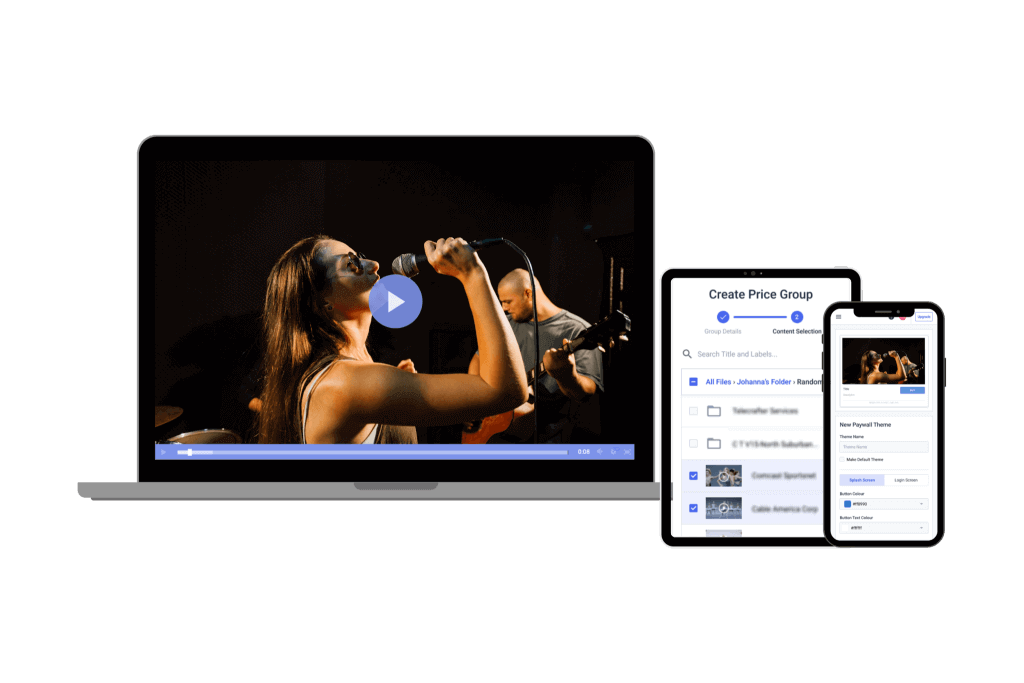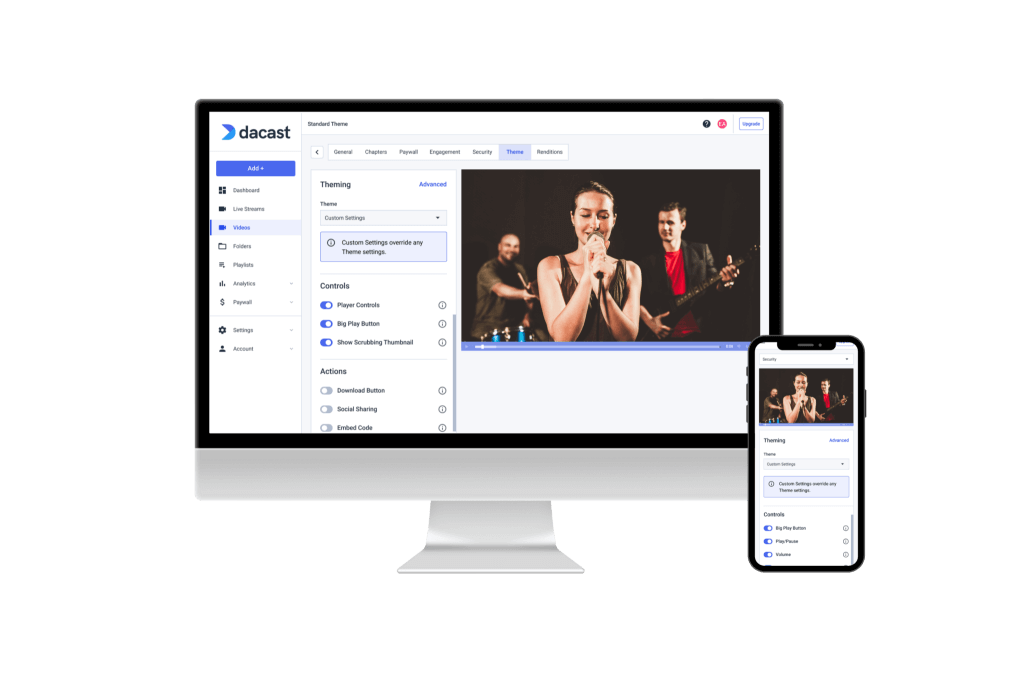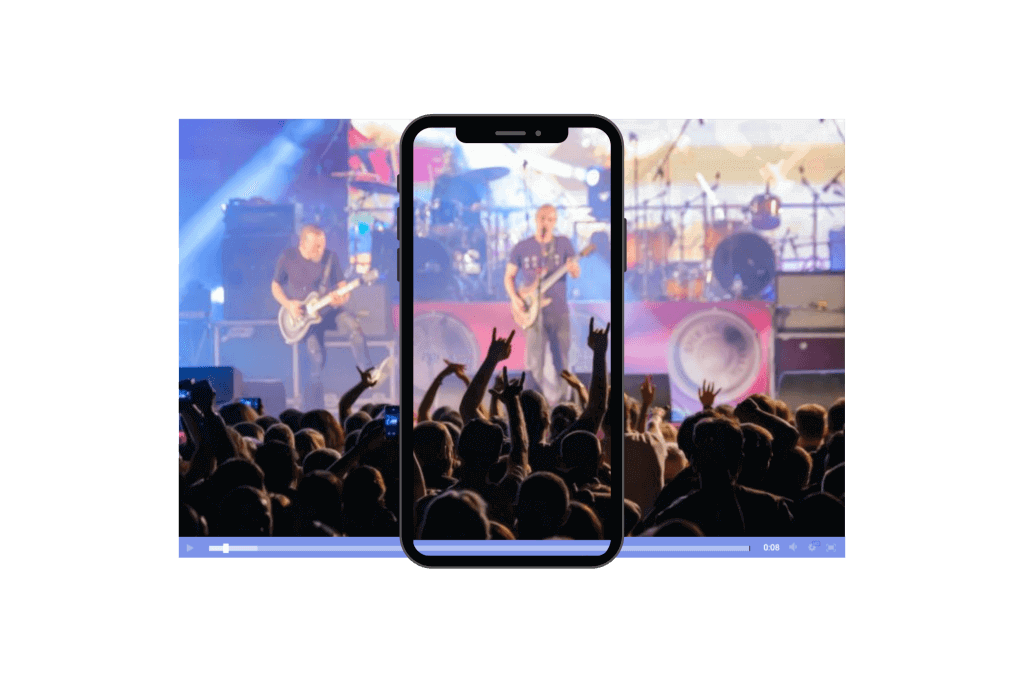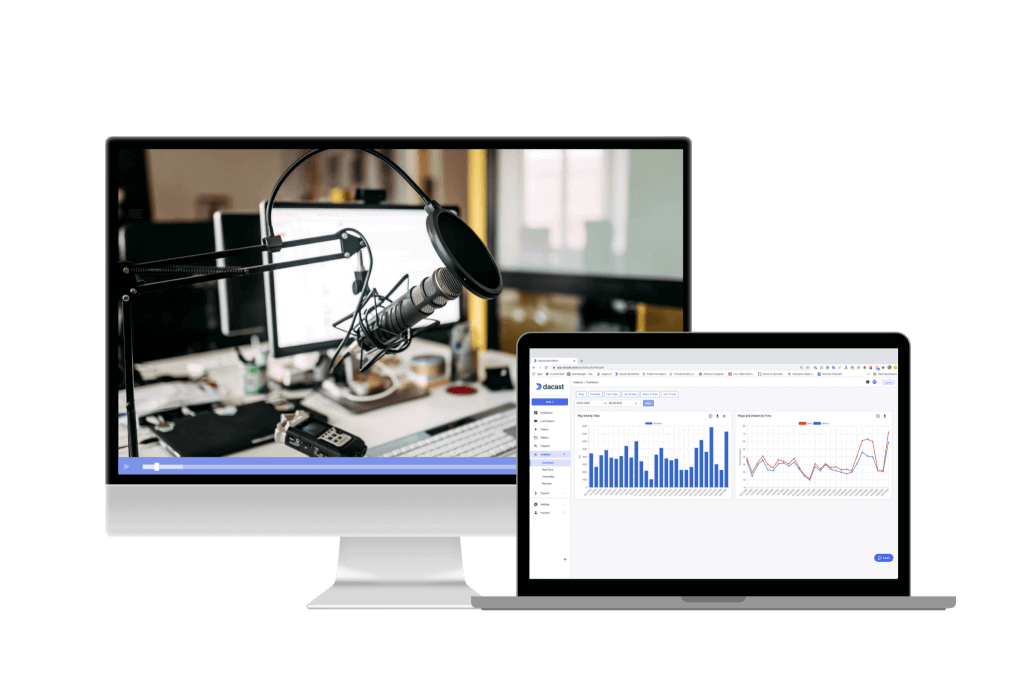Audio broadcasts and podcasts are very popular in the business world. They are a great way to connect with your ideal audience and share information with them. They are a great way to build your business brand.
People have always loved audio content; just look at the popularity of radio shows over the decades. Audio streaming is a modern format for audio content.
One of the great advantages of streaming audio is that people can listen live or on demand when they have the time. Building a streaming audio website in 2022 is a great way to connect with your target audience and build awareness of your brand and the causes your business stands for.
Whether your ideal audience is traveling, washing dishes or doing whatever else, podcasts and online radio can entertain them and inform them about your brand.
In this post, we’ll explore the topic of streaming audio. We’ll cover what you need to know about creating your own audio streaming platform. Specifically, we’ll look at two types of streaming audio, where to host your streaming audio, monetization options, how to host high-quality streaming audio, and more.
Table of Contents
- How to Create a Streaming Audio Website
- High-Quality Streaming Audio
- Where to Upload and Host Your Streaming Audio
- How to monetize your streaming audio
- On-Demand vs. live streaming audio
- Analytics for Podcasts
- Conclusion
li>
To that end, this article reviews key topics that you might be overlooking if you are new to the game.
Let’s get started!
How to create a streaming audio website

Podcast and radio hosts like Anchor, Apple Podcasts and the like are great options for beginners on low budgets, but embed and host your audio streams directly on your website. it’s the best way to share audio online.
Gives you full ownership of your content and removes any rules or community guidelines that might prevent you from creating the audio streams you want.
We will use Dacast as our example of how to build an online audio platform. This process and concept should be similar if you also choose to host your content on another platform.
Keep in mind that if you’re here specifically to learn how to make a live podcast or how to make a music streaming website, not all video platforms support live audio and streaming 24/7. Dacast does it. With that said, let’s go over how to create a streaming audio website.
1. Choose a Hosting Provider and CMS
To get started, you need a website where you can embed your audio player. If you don’t already have a website, two popular website hosting services are GoDaddy and Bluehost.
Both website hosting services work well with WordPress, which is one of the most widely used website content management systems (CMS). With WordPress, you can design the layout of your website.
2. Choose an audio streaming platform
Next, you need an audio streaming platform. There are many streaming audio platforms out there, or you can work with a professional video platform that offers audio-only capabilities.
One of the main reasons you may want to use a professional video platform is because it can offer you a wide range of tools that can help you grow your business, such as:
- 24/7 streaming audio
- CDN
- Live streaming audio
3. Log into your Dacast account
Again, for simplicity, we’ll continue to use Dacast as an example.
Once you have your audio streaming website ready, embed Your Audio streaming is quite easy, especially if you host audio streaming with Dacast.
When you log into your Dacast account, it will look for your list of live channels.
- Then click on the audio channel or audio file that you plan to embed on your website.
- On the next page, click “Publish Settings“.
- At this point, you will find two embed codes in the lower left section: iFrame and JS (Javascript). We recommend the JS embed code.
Here you will also find a share code, which is just a simple URL, to share with your followers.
4. Embed the audio player on your website
Copy and paste the embed code on your website. Most online radio stations embed a player at the top of their website. Alternatively, you can embed it on partner websites. This is just another option when you professionally host your audio stream.
Here are the simple steps on how to stream audio over the Internet using your own streaming audio platform.
High-quality streaming audio
Now that you’ve got your website set up, let’s talk specifically about how to live stream high-quality audio. In the next section, we’ll go deeper into encoding settings.
In 2022, we believe that AAC provides the best high-quality audio stream for most situations. Lots of people are familiar with MP3, so we’ll compare AAC to that to give you a better idea. Compared to MP3, you’ll generally achieve high-quality live audio streaming at similar bit rates. You’ll find the most obvious difference when streaming at lower bitrates (
By contrast, streaming platforms with audio hosting capabilities like Dacast provide functionality and power for live streaming. So if you are looking for a music hosting service to be able to perform live, you should consider Dacast.
Dacast supports scheduled events and 24/7 streaming. And since the content lives in your video CMS and is delivered via a powerful live streaming CDN (content delivery network), it can scale to large, globally distributed audiences without buffering or lag issues. Dacast also offers a multi-CDN solution for very large or important events where you don’t want to risk having your stream dropped.
Dacast also supports all three types of monetization: ad-based , subscription, and pay per stream.
Another thing to keep in mind is that many podcast hosting services offer only limited storage. Often they offer less than 1 GB per month, and sometimes only 100 MB or even less. By comparison, Dacast offers 50 GB of storage for just $39 per month with our Starter plan. That’s enough storage for hundreds of very high-quality encoded podcasts.
So if you’re streaming a lot of audio or very high-quality files, Dacast may be the best choice. Dacast also offers the ability to purchase additional storage if needed and enables automatic overage protection if your podcast goes viral. Additionally, you can password protect audio streams when you want to limit your listeners.
How to monetize your audio stream

The next section is for those wondering, “Can a podcast be monetized?” In short, the answer is definitely yes.
As podcasts become more popular, revenue from podcast streaming is booming. In fact, it’s projected to continue to grow at 31.1% year-over-year between 2021 and 2025.
When the concept of podcasts was newer, the idea of how to monetize a podcast was still a mystery. Now, in the world of podcasts and online radio, there are three proven ways to approach podcast monetization: advertising, subscriptions, and selling services/products. Also, broadcasters can choose to use pay-per-view to monetize a podcast, but this is not as common.
Here’s a quick breakdown of how to monetize your podcast.
1. Advertising
One of the main ways to monetize podcasts is through advertising. There are different ways to incorporate ads into your content with audio content.
Run Commercials
One of the most common ways to incorporate content is by running commercials on your podcast. You can run audio commercials at the beginning, end, or even in the middle of your content.
Talk about a product
With podcasts, many hosts will choose to talk about a product by integrating it into the podcast naturally. For example, if you run a health podcast, you might talk about a specific health product, like talking about a specific type of protein powder.
This can be a natural way to partner with a brand by incorporating their content directly into the podcast. Just be sure to disclose that you have a paid association with the brand in the podcast.
Run ad network ads
Another way is to insert ads from ad networks advertising. Dacast supports ad insertion with popular ad networks. This is one of the reasons why Dacast is one of the best podcast hosts for monetization because many video platforms are popularly ad-free.
It’s also very easy to do: just copy an ad URL from your ad serving provider, and then paste it into the Dacast backend.
The key is to find relevant associations for your main theme and your ideal audience so it doesn’t seem forced or commercial.
2. Subscription
Another popular way to monetize your content is through subscriptions, where people pay a subscription fee to access your show. You will need a secure paywall for people to pay the subscription fee.
The dacast streaming solution includes a built-in paywall with several configuration options. It supports credit cards and PayPal, as well as multiple currencies. This gives podcasters the ability to quickly launch and monetize streaming premium audio.
Allowing your audience to subscribe is a great way to build a deeper relationship with your audience. You can start building your audience by offering a few free podcasts that are valuable, and then offering a subscription to access the rest of your content.
Offering a subscription after offering a few free podcasts is a great way to spark people’s interest and get your audience more engaged with your content.
We live in an age where you love to feel part of a community, which is why so many people happily pay to be a part of communities even though there are so many free options available.
p>
3. Sell your products or services
Selling your own products or services is possibly the best way to monetize a podcast. In practice, it’s very common to start by giving your audience free advice on specific topics.
For example, let’s say you’re a Facebook Ads specialist looking to sell consulting services to businesses. In your podcast, you can take the approach of answering frequently asked questions about Facebook ads.
By doing this, you establish yourself as an authority in the eyes of your ideal target audience. Once you’ve made enough podcasts and helped enough people, the rest will come naturally.
If you stick with it, one of your listeners will eventually want to increase their ad spend on social media. When they do, they will naturally think of you when looking to hire someone for Facebook Ads implementation or consulting. The concept applies to virtually all professions (legal, business, accounting, etc.).
Keep in mind that you don’t have to go from giving free advice directly to increased ticket sales. Sometimes it helps to have a less expensive service or product as a springboard. For example, the Facebook ad specialist may want to make a downloadable PDF with 100 proven Facebook ad templates and then sell it for a small price of $9. That way, the podcaster appeals to people with all kinds of budgets and goals.
4. Pay-Per-View
Using pay-per-view is another way to monetize podcasts and audio streams. A paywall may charge for access per episode or for access to a series of entire shows.
Again, this is not very popular.
On-Demand vs. Live Audio Streaming

There are two main types of online audio streaming: on-demand and live.
On-demand is podcast-style audio. Listeners can play an episode at any time. The content is always available in a file, stored in your video content management system.
The second common type is live audio streaming, which is like Internet radio. Businesses can use live streaming audio for a single event or broadcast, after which they can make the recording available on demand.
Alternatively, you can choose to broadcast audio 24/7, linearly style. This is the case with online radio.
Both approaches are valuable in their own way, and many broadcasters may choose to use both approaches if appropriate for the context.
Analytics for podcasts

Analytics refers to capturing data about your viewers. You can use this data to help increase the quality of your work in the future.
The most basic analytics data includes:
- Number of listeners
- Locations of listeners (country and city level data)
- Average listening time
- Revenue
- Most popular shows
- Most popular device types
- Revenue data, broken down by time, device, and location
Dacast also offers innovative real-time analytics. This means that live audio streamers can get real-time insights into audiences while streaming, which is quite valuable.
How to Use Analytics (Examples)
Let’s dive deeper into ways to put analytics into action.
One way to use analytics is to see where the majority of your listeners live. For example, if you see that a lot of your viewers are coming from New York City (NYC), it’s helpful to explore that. Why is so much of your traffic coming from New York? Perhaps an influencer in the area shared your podcast. Or maybe your humor really resonates with the people of New York. You can learn a lot about your audience by diving into the analytics.
To take it a step further, since people in New York obviously like your podcast, you might consider running ads on the podcast. area to further advertise your podcast. podcast.
Let’s use another example. Let’s say you’re getting a lot of traffic from Nashville, Tennessee, but for some reason, you’re getting more revenue from New York City, where you have fewer followers. You now know that you should spend more time and money advertising to people in New York City because it is proving to be a higher return on your investment.
Of course, the specific decisions you make will be different depending on your goals and your main monetization strategy.
Conclusion
The Audio streaming is becoming more and more popular for good reason. It’s a great way to publish your content in an easy and convenient way to access. Thanks to streaming platforms like Dacast, it’s easy to start streaming today.
If Dacast sounds like an audio streaming platform you’d like to try, you can sign up for our 14-day free trial (no credit card). required) below. That way, you can try out all of our great features before you commit, and we can answer any questions you might have along the way.
GET STARTED FOR FREE
What’s your podcasting experience been like? ? Let us know in the comments below.
.
